shui xi of Luo Yang
shui xi of Luo Yang/Luoyang Water Banquet is a traditional feast with characteristics in Luoyang, Henan Province, which belongs to the Henan Cuisine Department. Luoyang Water Festival began in the Tang Dynasty, and has a history of more than 1000 years. It is one of the most ancient banquets in China so far.
There are two meanings of Luoyang water mat: one is that all hot dishes have soup-soup water; the other is that after eating one hot dish, Luoyang water mat will be retracted and updated as running water. Luoyang water mat is characterized by well-known meat, wide selection of materials, simple and complex, diverse taste, sour, hot, sweet, salty, comfortable and delicious.
On September 10, 2018, "Chinese cuisine" was officially released, and "Luoyang Water Banquet" was awarded the top ten theme banquets of "Chinese cuisine" in Henan Province.
Water mat originated in Luoyang, which is directly related to its geographical climate. Luoyang is surrounded by mountains with little rain and dry weather. In ancient times, the weather was cold, and no fruit was produced. Therefore, folk diets used soups more, preferring hot and sour to resist the dry cold. People here are accustomed to using starch, lotus vegetable, yam, radish, cabbage and other local products to make economical and rich banquets. Even Wang Gongguiqi is accustomed to putting the main and non-staple foods together to cook. Over time, Luoyang water mat with rich local characteristics has gradually been created, and gradually formed a "special sour and hot taste". Fresh and delicious flavor.
According to legend, Yuan Tiangong visited the sky in his early years and knew that Wu Zetian would become emperor in the future, but the opportunity could not be revealed. He designed this feast, which foreshadowed the wine and meat scenery of Wu Zetian 24 years later. Every dish soup water, that is to say, implies that Wu Zetian water comes into being; dry and sparse, refers to the relationship between Wu Zetian 24 years (sparse). The order of the "Luoyang water mat" is the first eight dishes (cold dishes), four town tables, eight pieces and four sweeping tails, totaling 24 dishes, which coincides with Wu Zetian's command of the Dynasty from the first year of Yonglong to the twenty-four years of the death of Shenlong in the first year of Luoyang Shangyang Palace.
The so-called "water mat" has two meanings: one is that all hot dishes have soup-soup water; the other is that hot dishes are eaten together, then retreated and refreshed like running water.
Luoyang people regard the water mat as a table in various banquets, in order to entertain distant visitors. It is not only a popular table in a grand banquet, but also a ritual occasion such as weddings, funerals, weddings, birthdays, festivals and so on. People are also used to entertaining relatives and friends with a water mat, which is called "38 tables" cordially. As a traditional dietary style, it is also known as the "Three Wonders" of Luoyang as well as the traditional Peony Flower Festival and the ancient Longmen Grottoes. It is known as the "Three Wonders" of the ancient capital, Luoyang, and becomes the pride of Luoyang people.
There are 24 dishes, including 8 cold dishes, 4 large dishes, 8 medium dishes and 4 table-pressing dishes, including hot and cold dishes, buckwheat, sweet and salty dishes, sour and hot dishes. The order of serving is very exquisite. First, eight cold dishes are served as dishes for serving wine, each dish is made up of three pieces of buckwheat, a total of 16 dishes. After three rounds of drinking, guests are served hot dishes: first, four hot dishes are served, each with two medium dishes (also known as accompanying dishes or seasoning dishes), the name of which is "bring up the court". Finally, four dishes are served with a pressing table, including a chicken. Egg soup, also known as sender soup, shows that the whole table is full. Hot dishes will be served with soup and water. Chicken, duck, fish, fresh food, fungi and seasonal vegetables are all in the dish. Silk, slices, bars, cubes and dices are fried, fried, fried, fried, fried and cooked, and they change endlessly. However, there are still many kinds of folk seating practices, such as Babao, the last dish. Have a long history.
Paste noodles
Slurry noodles, both economic and delicious, is a popular snack in Luoyang. It is put soybean milk at the appropriate temperature, fermentation acidification, and then put into the pot heated to about 80 degrees, the liquid surface will have a mushroom-like foam. At this time, add a little fragrant oil, repeatedly stirring, until boiling, noodles into, preferably miscellaneous noodles. Mix the batter to make it pasty. Then, salt, onion, green beans, celery, leek and chili are added. Luoyang pulp noodles, simple to make, low cost, delicious taste, easy to digest, is a local famous food with strong local characteristics.
Yan Jia mutton soup
Yanjia mutton soup, which has been passed down for four generations, has a history of 1500 years. Yan Shunsheng, the second generation, innovated the mutton soup to make the condiment disposition appropriate and the soup taste more delicious. Since then, Yan Jia mutton soup has become famous in Western Henan urban and rural areas. The characteristics of Yanjia mutton soup are: fresh mutton, meat for the day, and sheep for the day; complete spices and large quantities. Use pepper instead of pepper. It's salty and tasty. The soup tastes delicious.
Zhangjia wonton
Zhang Jia Wonton, also known as "Horseshoe Street Wonton". The founder is Zhang Xu, who has a history of 150 years. In 1920, Zhang Kun, the second generation descendant of Zhang Jiaduan, innovated and improved the ingredients and varieties, using white-faced chicken, chicken blood, thin egg cakes, shrimps, water vermicelli and pickles as the main ingredients, while using oil, pepper, soy sauce, chicken soup, pork soup, vinegar as the auxiliary ingredients, leek, scallion in winter, tender leek and Toon in spring. Therefore, Zhangjia wonton has the characteristics of fine production, delicious taste, delicious fragrance, sour and hot.
Shang Ji beef soup
There are two kinds of beef soup, sweet and salty. Its characteristics are: fresh broth, complete soup accessories, fried pepper and garlic, pounded together, and the taste is particularly fresh. Luoyang people like to eat beef steamed bun in the morning. There are many people who take steamed buns to soak, or buy soup back to soak, and eat beef steamed buns. Today, there are people who eat beef steamed buns in the morning, in the middle of the day and in the evening.
Pan Jinhe roast chicken
Pan Jin and roast chicken enjoy a long reputation in Luoyang. The founder Pan Gensheng, whose son Pan Jin started business in 1941, is well-known for its unique flavor and flexible operation. Now Pan Jin and roast chicken are the son of Jin He. Ingredients are clove, straw fruit, nutmeg, Dahui, Xiaohui, pepper and so on. Pan Jin and roast chicken are delicately made, pure in taste, yellow in skin and red in color. The meat is tender and tender, and the aftertaste is fragrant.
No soup
Luoyang does not turn soup, has a history of more than 120 years. Liu Zhensheng, the founder, has been passed down to three generations. His name is Liu Hulan. He is over 70 years old. Ingredients include mung bean powder, pepper, monosodium glutamate, soy sauce, vinegar, agaric, vermicelli, kelp, shrimp skin, laver, leek, Jinzhen, salt. Its characteristics are pure taste, hot and sour taste, oil but not greasy.
Zhang Ji roast chicken
Zhangji roast chicken in Yushu Garden is a rising star of roast chicken business in Luoyang. Zhang Xinzhong, the founder, and his son Zhang Tielin, succeeded in running roast chicken in 1962. Zhangji roast chicken is now a famous brand roast chicken in Luoyang. The main ingredients are clove, anise, fennel, grass fruit, pyrene scutellaria, cinnamon, ginger, dangshen, peel, nutmeg, orange peel, almond, pepper and cardamom. Its characteristics are rotten, tender and fragrant. No fishy, no hard, no greasy, a shake, meat will fall off, abnormal bone separation.
Xin'an steamed dumpling
Xin'an hot dumpling, which has a history of more than 70 years, is famous on the Qianli Longhai Line. Xin'an steamed dumplings, using white powder for skin, pig * s back and buttocks meat for the main stuffing, with the right scallion, leek, cabbage heart, ginger, with sugar, cooking wine, small grinding oil, salt, MSG and so on. Blanch the noodles, roll them into thin skins, wrap them into dumplings like crescent dumplings, steamed in a cage for 10 minutes. Its characteristics are as thin as paper, as jade in color, full of five flavors, not greasy fragrance.
Soup with pepper
Hu hot soup is a unique snack in Luoyang, which has a history of one hundred years. Fine cooking, delicious taste, economical, convenient for the masses, well-known urban and rural areas. Beginning in the old city, it now spreads all over the streets and alleys. The main ingredients are flour, noodles and pork. Ingredients include peanut kernels, taro, yam, golden needle, agaric, onion, garlic slices and gluten foam.
On the water mat, people who like cold food can find their own cold dishes, people who like hot and sour dishes. The water mat dishes can make you sweat hot and sour. Some people like sweets, and the fourth set of dishes is good enough for people to eat. The unique feature of the water mat is that there are many soups. People who go to the dinner can eat the soup alternately, which can make people feel comfortable in the stomach and intestines. Although many dishes are not satiated with the appetite. When you see the egg soup on the table, everyone who knows the local customs knows that all 24 dishes have been served. This bowl of soup shows that the water mat has come to an end. The guests and hosts are all very happy and have risen and left the table one after another.
Some people say that Luoyang water mat soup, like a soothing and delicate piece of music, starts with a light taste, then add a little spicy, add sugar into the sweet and salty taste, then vinegar sour... After a few bowls, it can only be described as "refreshing".
Luoyang mattress, with its unique flavor, exquisite skills, lifelike shape, beautiful legends and cultural accumulation of origin, caused a sensation, is called a wonderful flower with the local characteristics of the ancient capital of Luoyang.
The characteristics of Luoyang mat:
First, it is well-known, vegetable meat, wide selection of materials, birds in the sky, animals in the ground, fish in the sea, vegetables in the field can be attended. According to the economic situation of the seaters, they can be simple and frugal.
Second, there are soups with water, taste diverse, sour, spicy, sweet, salty, almost everyone can find their own taste of dishes, comfortable and delicious.
Thirdly, there are strict rules on the order of serving, reasonable collocation, careful selection of materials and appropriate temperature.
Luoyang water mat has a long history and is well-known in ancient and modern times. Red and white events, banquet guests, take the lead. Luoyang water mat is divided into three grades: high, medium and low, which can be decided according to the situation. Therefore, it is widely welcomed by urban and rural people. It has been passed down for thousands of years.
Luoyang water mat, from the folk, is a unique traditional food in Luoyang area. Hot and sour taste, refreshing and delicious. In the Tang Dynasty, Wu Zetian ordered the water banquet of Luoyang into the palace and added the precious seafood to make a royal banquet, which was also handed back to the people from the palace. Then a unique flavor is formed. Because of imitating the method of making official banquet, it is also called official banquet.
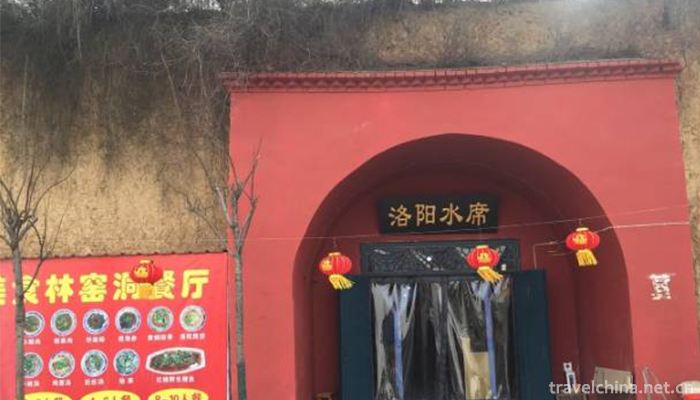
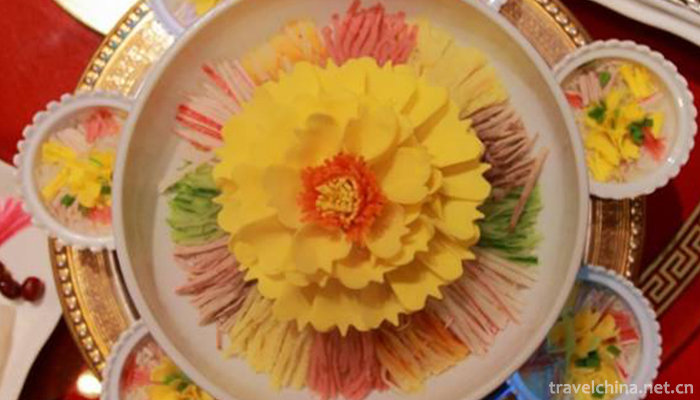

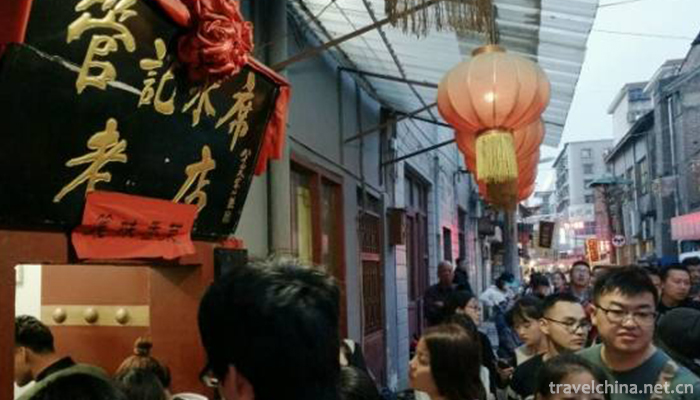
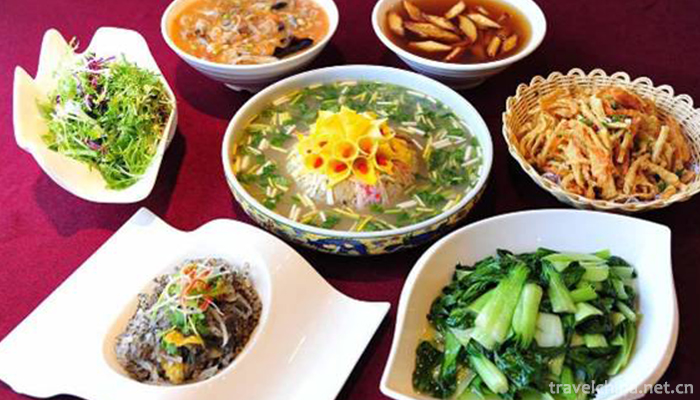
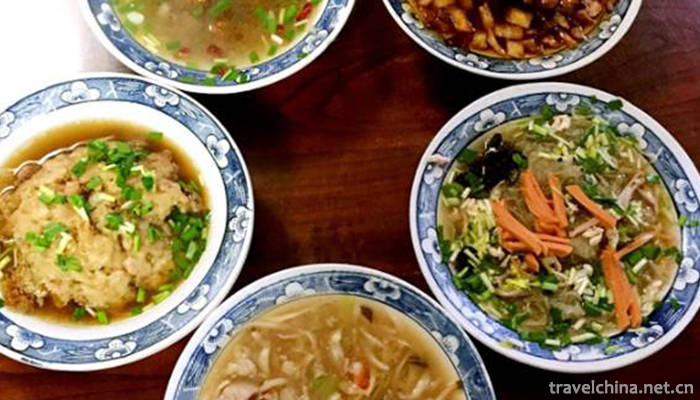
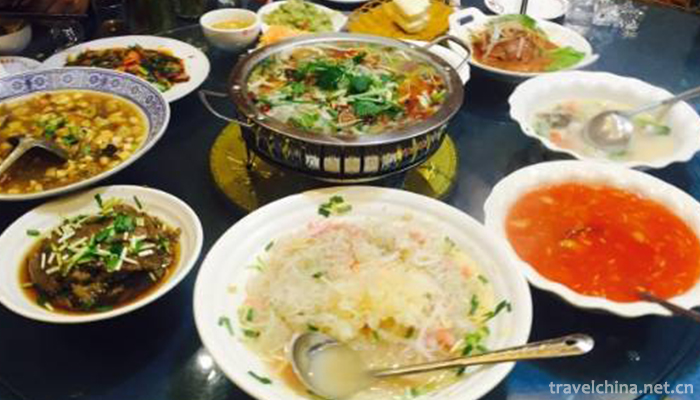
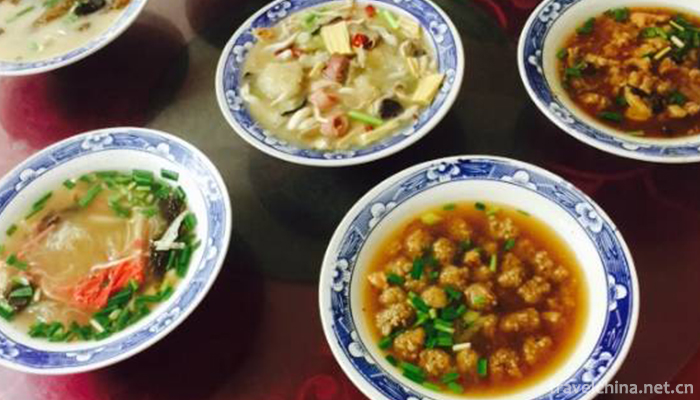
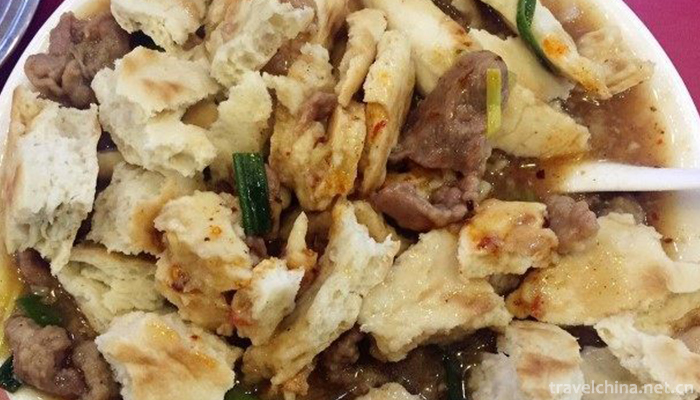
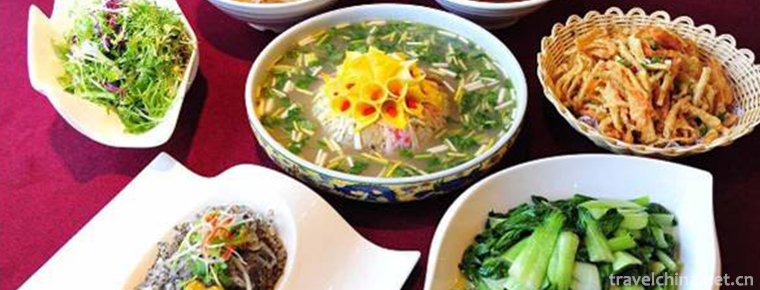
-
1.Mountain Lushan
Mount Lu, also known as Kuang Shan and Kuang Lu, is located in Mount Lu City, Jiujiang, Jiangxi province. It is located between the east longitude 115 degrees 52 '- 116 degrees 8'
Time 2018-10-30 -
2.Wulong Karst Tourist Area Movie Transformers Place
Wulong Karst Tourist Area is located in Wulong District of Chongqing City. It has rare natural karst landscape, including karst caves, Tiankeng, ground crevices, canyons, peaks, alpine grasslands, etc
Time 2018-12-12 -
3.Beijing Hotel
Located in the center of Beijing, Beijing Hotel is adjacent to the former Imperial Palace and Forbidden City. It can reach Tiananmen, the Great Hall of the People
Time 2018-12-14 -
4.Yinghu Scenic Area
Yinghu, a national AAAA-level tourist area, is located 16 kilometers southwest of Ankang City, Shaanxi Province. The total area is 102.8 square kilometers, including 77 square kilometers
Time 2019-03-05 -
5.Peking Man Site at Zhoukoudian
Zhoukoudian Peking Man Site, located in Longgu Mountain, Fangshan District, Beijing, is an important Paleolithic site in China. Since 1927, three complete skulls and some remnants have been found in t
Time 2019-03-20 -
6.dongjing music
Dongjing music is a very ancient traditional instrumental music, which originated in Sichuan Province in the Song Dynasty and is now popular in Sichuan Province
Time 2019-04-28 -
7.Lanzhou drum
Lanzhou Drum, also known as Lanzhou Drum Ci and Lanzhou Quzi, is a popular folk form in Lanzhou area and one of the ancient Chinese Quyi. Lanzhou drum is a form of music art mainly composed of sitting
Time 2019-05-10 -
8.Burning Techniques of Linqing Gong Bricks
Linqing fired tribute brick is an ancient handicraft. Beginning in the early Ming Dynasty, Yongle's firing technology is the unique experience accumulated by the working people in Linqing of Shandong
Time 2019-05-13 -
9.Lu Opera
Luju opera, formerly known as "pour seven operas", is commonly known as "small opera", "prayer and sacrifice opera", "small pour opera", "small barbaric op
Time 2019-05-15 -
10.Nu Fairy Festival
Fairy Festival is a traditional folk festival of Nu people in Gongshan area of Yunnan Province. The local flower festival, also known as the Flower Festival, is held on March 15 of the lunar calendar
Time 2019-06-08 -
11.Chuzhou University
Chuzhou University is a full-time general in Anhui province. Undergraduate Colleges Yes. Anhui higher education revitalization program "Local application type" High level University Construc
Time 2019-11-09 -
12.How long does it take for Chengdu to get to the giant panda base
When you come to Chengdu, you must come and see the lovely giant panda. The nearest panda base to the city is the giant panda breeding research base. How long does it take from Chengdu to the giant panda base?
Time 2020-12-13